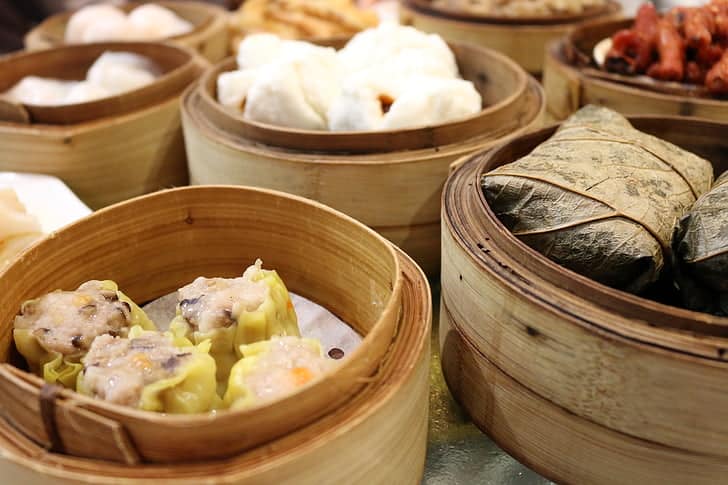Dim sum, those bite-sized Cantonese wonders, have charmed taste buds for centuries. Their story starts in the teeming streets of Guangzhou, China, during the era of the Silk Road. In teahouses where weary travellers and locals alike sought respite, dim sum, with its origins rooted in the notion of ‘yum cha’ or ‘drinking tea,’ evolved into a communal dining experience.
Dim sum’s early incarnation was simple, consisting of tea and a few modest snacks. But, as the teahouse culture flourished, so did the variety and complexity of these bite-sized treats.
In the Song Dynasty (960-1279 AD), dim sum began to take a more recognisable form. The imperial kitchens embraced these creations, and the practice of serving dim sum with tea became a sophisticated affair. Dumplings, buns and rolls adorned royal tables, marking dim sum’s ascent from humble teahouses to the culinary elite.
The journey of dim sum continued to evolve as it migrated beyond China’s borders. It found a new home and global stage in Hong Kong. Cantonese immigrants, bringing with them the rich tradition of dim sum, established eateries that would soon become iconic around the world.
Dim sum’s popularity transcended cultural boundaries, finding its way into the hearts and stomachs of food enthusiasts worldwide. Today, you can find dim sum on menus from London to Sydney, with chefs putting their creative twists on these small delights. The variety has expanded beyond traditional offerings to include modern interpretations that cater to diverse tastes.
In the 21st century, dim sum’s journey continues with a fusion of tradition and innovation. Contemporary chefs, inspired by the rich heritage of dim sum, experiment with new flavours, textures and presentations.
So, whether you’re sipping tea in a traditional Hong Kong teahouse or relishing dim sum in a trendy urban eatery, each dumpling is a bite-sized celebration of Cantonese culinary craftsmanship – a taste of history folded into every delicate parcel.







Click here to change your cookie preferences